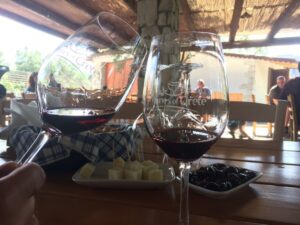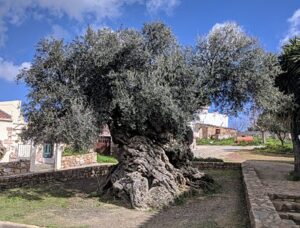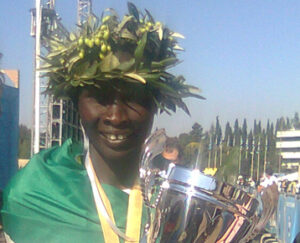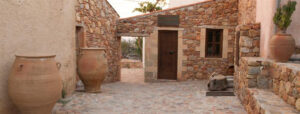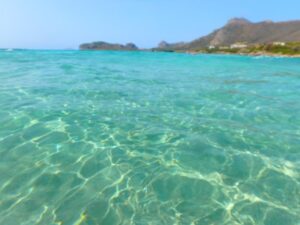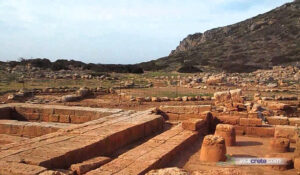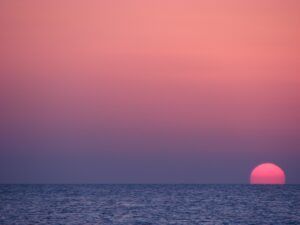Half-day Excursion
Tour of Karavitakis Winery, the Olive Tree of Vouves & Phalasarna beach
Find out about the 4,000 year old legacy of Cretan wine: how the geography and history of the island has shaped the wine industry, and taste wines from local grape varieties at Karavitakis winery .
Admire the Monumental Olive Tree of Vouves, the oldest olive tree in the world, with a lifetime spanning 30 centuries, since the time when the Minoan civilization ruled over Crete. Visit the Olive Museum, which is dedicated to the practice of olive cultivation, and taste the award-winning Kolymbari olive oil that is considered as one of the best in the world.
Finally, swim in the turquoise waters of Phalasarna beach and discover the ancient Phalasarna site just behind the hill.
The Program
A half-day excursion will take place on Wednesday, June 5th, approx. 15:30 – 22:30. Buses will depart from the entrance of Minoa Palace Resort & Spa. Please remember to bring the ticket for the excursion. Bottles of water and Italian sub sandwiches will be provided.
Wine Tasting at Karavitakis Winery
Our first stop will be at Karavitakis Winery where will spend 45 minutes.
The estate consists of 150 acres of vineyards with carefully selected terroirs for each and every variety. The winery produces wines from both local and international grape varieties, and furthermore experiments with rare varieties from around the world. The winery features modern facilities, 2 winetasting areas and a small church nestled between beautiful vineyards and olive groves on the hilltops of the Kolymbari area.
Following the tour, we will have the opportunity to enjoy wine samples from local grape varieties, which are produced exclusively by Karavitakis family members.
Ancient Olive Tree of Vouves & Olive Tree Museum of Vouves
The next stop is the village Vouves where we will visit the Ancient Olive Tree and the Olive Tree Museum.
The Olive tree of Vouves is one of the so-called “monumental olive trees” of Crete: a symbol of immortality; a perennial tree, strong and proud. The exact age of the tree cannot be determined. The use of radioisotopes is not possible, as its heartwood has been lost through the centuries, while tree ring analysis demonstrated the tree to be at least 3,000 years old.
The tree remains productive to this day, having been grafted with the cultivar ‘Tsounati’. The trunk has a perimeter of 12.5 m (41 ft) and a diameter of 4.6 m (15 ft). In 1997, the tree was declared a protected natural monument.
In the ancient Olympic Games there were no gold, silver, or bronze medals. There was only one winner per event, crowned with an olive wreath made of wild-olive leaves from a sacred tree near the temple of Zeus at Olympia. According to Pausanias, the olive-wreath was introduced by Hercules as a prize for the winner of the running race, to honor his father Zeus.
Olive wreaths made from the Olive tree of Vouves were given out for the Marathon runner winners of the 2004 Athens Olympics and the 2008 Beijing Olympics, in honor of the ancient tradition.
Next to the monumental tree, the Olive Tree Museum of Vouves was inaugurated in a nearby 19th-century house, in order for visitors to learn about the tradition of olive cultivation in Crete.
Take pictures and walk through this small country museum where ancient farming equipment is displayed. The museum exhibits cover the whole cycle of cultivation, collection, production, transport and storage of olive oil used from antiquity until the mid-1950s.
Phalasarna beach
Leaving Vouves behind, we will continue westwards for 45 minutes to reach Phalasarna. We will spend 3 hours in this area to admire its crystal clear waters, its superb sandy beaches, the antique harbor and dreamy sunsets!
Phalasarna beach consists of several sandy beaches of various lengths stretching for miles, all facing West, and picturesque cliffs, ideal for watching the sunset.
The main beach of Pacheia Ammos is a few kilometers in length and consists of white sand and turquoise waters. Sun-beds, umbrellas, facilities for water-sports and courts for beach-volleyball are available. Because of the winds that blow hereabouts, Phalasarna is an ideal destination for wind surfers.
If you wish to avoid the crowds at Pacheia Ammos, you can seek out the smaller beaches, which are nearby, both to the north and south. They are rather isolated and without facilities; some have pebbles, others sand: but all are ideal for ‘chilling out’.
There are a few beach restaurants and cafés on or close to the beaches as well as a couple of small shops.
Phalasarna is listed as a Natura 2000 site and is a very interesting place for botanists who make special trips to see rare flowers that grow there, such as Juniperus oxycedrus, Tulipa goulimyi, Centaurea pumilio, large populations of Pancratium maritimum, Viola scorpiuroides, many types of orchids, as well as a couple of small coastal ponds.
Ancient Phalasarna
Just behind the hill, discover the ancient Classical harbour site. You can walk around remnants of the 333BC city and its once submerged stone quays; pretty impressive even for non-archaeology fans!
To access them you need to walk to the end of the asphalted road and continue on the dirt track. It takes about 15-20’ to walk each way.
Because of a sudden uplift of the West of Crete 1,500 years ago the harbour is now located inland.
Finally, enjoy the spectacular sunset!!!
Buses will depart from Phalasarna beach at 21:30 to reach Platanias Village approximately at 22:15.
The cost of participation is 20 euros per person and includes transportation by bus, the entrance to the Olive Tree Museum and wine tasting at Karavitakis winery.
If you would like to reserve a place, please complete the form (.doc , .pdf) by April 5th. By signing this form you commit to paying in cash upon registration at the meeting. Accompanying persons wishing to join the excursion are kindly asked to follow the same instructions.
